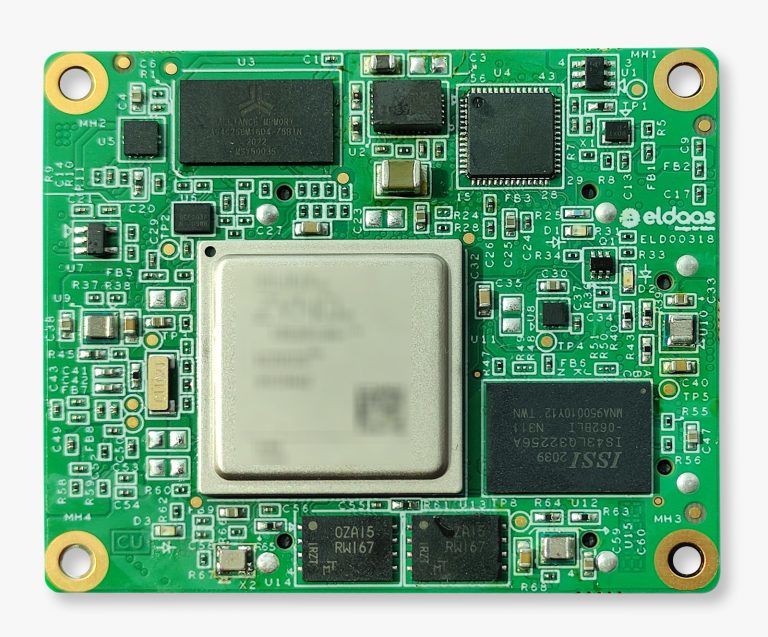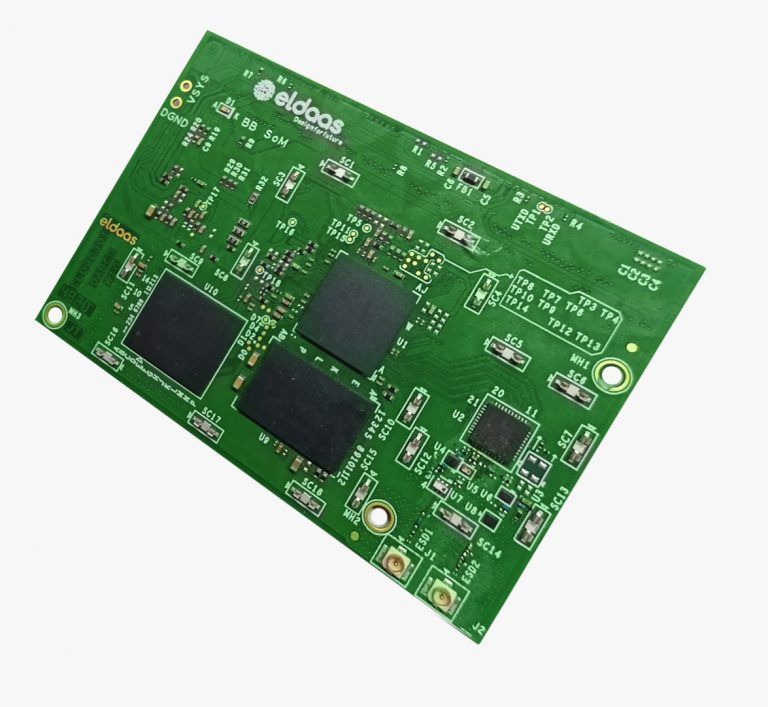Introduction
In the rapidly evolving landscape of electronics product design, the System on Module (SoM) methodology has emerged as a key driver of transformation. With its compact size, high performance, and cost-effectiveness, SoM is gaining popularity among designers and engineers. This blog post delves into the benefits of the SoM approach and its implications for the future of electronics product design.
A Closer Look at SoM
The System on Module (SoM) provides a pre-integrated platform that includes the core components of the system, such as the processor, memory, power management and I/O interfaces onto a single module.
The System-on-Module (SoM) methodology has indeed become a game-changer in electronics product design due to its numerous benefits.
Let’s explore some of the key advantages of adopting the SoM method:
Detailed Benefits of the SoM Approach
1. Faster Time-to-Market: One of the most inherent benefits of using SoM is to reduce development timelines. By incorporating pre-designed and pre-validated modules, developers can bypass the complexities associated with hardware design, allowing them to focus on software development and customization. This acceleration in the development cycle enables faster prototyping, testing, and ultimately, quicker time-to-market.
2. Reduced Development Risk: Developing complex systems from scratch carries inherent risks, including design flaws and unforeseen complications. SoMs minimize these risks by offering tested and proven modules, reducing the chances of encountering issues during the development process. This can save a significant amount of time that would otherwise be spent on testing the individual components.
3. Scalability and Longevity: The inherent flexibility of SoMs makes it easy to upgrade or change components, providing products with longer lifespans. As technology evolves, an SoM-based design can be updated to accommodate new features or improved performance.
4. Cost-Effectiveness: When considering total cost, SoM often comes out ahead. While the upfront cost of an SoM might be higher than a custom solution, the reduction in design and testing resources and shorter time-to-market often result in lower overall costs.
5. Complexity Management: SoMs are designed to handle complex tasks, which simplifies the overall design process. This allows designers to focus on product-specific functionalities rather than getting bogged down with complicated system design.
Real-World Applications: SoM in Action
The advantages of SoM extend to numerous practical applications. In sectors like the Internet of Things (IoT), industrial automation, medical devices, and more, SoM is proving invaluable in enhancing product design and functionality. We will discuss some notable applications and illustrate how SoM brings tangible benefits to these fields.
1. Internet of Things (IoT): The Internet of Things is arguably one of the most significant areas where SoM shines. IoT devices often require compact size, low power consumption, and high-performance processing capabilities – all qualities inherent in SoMs. For example, in smart home devices like thermostats, security cameras, or smart speakers, SoMs can manage complex tasks such as voice recognition, data processing, and connectivity while fitting into a compact form factor.
2. Industrial Automation: Industrial automation systems require robust, reliable, and powerful computing capabilities. SoMs provide these attributes in a condensed package, making them a fitting choice for tasks like machine control, process automation, and robotics. The scalability and upgradeability of SoMs also make them well-suited for evolving industrial environments that demand future-proof solutions.
3. Medical Devices: In the healthcare sector, SoMs are making their mark in the design of medical devices. From compact wearables that monitor vital signs to more complex diagnostic and imaging equipment, SoMs deliver the necessary processing power while meeting stringent size, safety, and reliability requirements. They also offer the potential for scalability and adaptability as medical technology continues to evolve.
4. Automotive Systems: Modern vehicles are becoming increasingly sophisticated, featuring advanced infotainment systems, driver assistance technology, and even autonomous capabilities. SoMs play a crucial role in managing these complex tasks, offering the necessary computational power, flexibility, and compactness. They enable faster development and deployment of advanced automotive systems, thereby reducing time-to-market.
5. Edge Computing: Edge computing involves processing data closer to its source rather than relying on a central location or the cloud. This approach reduces latency and enhances efficiency, making it ideal for real-time applications. SoMs are ideally suited for edge computing applications due to their compact size, processing power, and versatility.
These real-world applications illustrate the versatility and effectiveness of the SoM approach. In an array of sectors and an even wider range of specific applications, SoMs are driving innovation, enhancing efficiency, and enabling the development of increasingly sophisticated electronics products.
The Future of SoM in Electronics Product Design
As we look towards the future of electronics product design, the role of System on Module (SoM) is set to grow even further. This is not just a trend; it’s an ongoing paradigm shift in how we approach the design and manufacture of electronic products. Here’s a glimpse into what lies ahead for SoM:
1. Emergence of Advanced Technologies: With the rise of AI, IoT, and edge computing, the demand for powerful, compact, and efficient computing solutions is escalating. SoM is ideally placed to meet these requirements, offering robust processing power in a form factor that fits within the tight constraints of advanced technological devices.
2. Proliferation of IoT Devices: The number of IoT devices is projected to grow exponentially in the coming years. As this growth continues, the need for the compact, efficient, and flexible design that SoM offers will become even more critical. SoM will continue to be a cornerstone in the design of smart devices, providing the functionality and flexibility needed to accommodate evolving consumer needs and technological advancements.
3. Increased Demand for Customizable Solutions: As industries strive for differentiation and tailored solutions, the demand for customizable and scalable systems will increase. SoM, with its modularity and flexibility, enables designers to create bespoke solutions without the need for substantial redesign, making it a viable choice for future electronics product design.
4. Sustainable Electronics Design: As environmental concerns continue to shape industry norms, there’s an increasing focus on sustainable design. SoM supports this trend by maximizing functionality while minimizing material use, thereby reducing the environmental impact of electronic products. In this regard, SoM not only presents a technological advantage but also a socio-environmental one.
5. Evolution of Hardware Capabilities: With advances in semiconductor technology, future SoMs will boast even greater processing power, more memory, and better energy efficiency in an even smaller footprint. These hardware capabilities will facilitate the development of more complex, capable, and compact electronic products, driving further innovation in the industry.
6. Pervasive Automation: In an era where automation is becoming pervasive across industries, SoM-based designs will play a vital role in facilitating the rapid development and deployment of automation systems, thereby contributing to the larger automation trend.
If you’re intrigued by the potential of SoMs and want to explore how they can benefit your projects, here’s an exciting opportunity! We are currently offering a FREE Evaluation of our SoMs, giving you the chance to identify which SoMs and what processor/FPGA works best for your project and application. Terms and conditions apply.
This evaluation will provide a comprehensive overview of our SoM capabilities, ensuring you have all the information you need to make an informed decision. Don’t miss out on this unique chance to take your project to the next level.
However, do bear in mind that we can only extend this offer to a limited number of people due to the constraints of our team’s bandwidth. So, don’t delay – take action now!
my team will set up a time to connect with you.
Conclusion
The System on Module approach is an innovative, efficient, and cost-effective method that is redefining the landscape of electronics product design. With our FREE SoM Evaluation, you can discover first-hand the potential of this game-changing approach.
About the Author

Cheepati Ashok Reddy is a seasoned electronics engineer with a deep interest in groundbreaking design methodologies. With a background in electronics engineering and a passion for writing about technological advancements, Ashok offers a unique and insightful perspective on the evolving world of electronics product design.
About ELDAAS
ELDAAS is a trusted 13-year-old company, equipped with state-of-the-art facilities. Through partnerships with companies like AMD and MediaTek, ELDAAS specializes in developing system-on-modules, empowering customers with efficient and customizable solutions. We are specialized in custom board design, Software development, App development, and Cloud development.




